This Guest Article for REVITALIZATION was written by Mark Thompson Brant.
PROLOGUE –
CONSERVATION’S NEXT 50: THE NEW ENVIRONMENTAL IMPERATIVE
The built environment conservation/preservation community, like society in general, has now entered a defining “moment”. It is a period of great opportunity and great risk.
The Intergovernmental Panel on Climate Change (IPCC) tells us we have now only a decade to slow or stop the processes of Climate Chaos, to prevent what is otherwise the assured rapid acceleration of Earth’s destruction. *1
“The problem with a catastrophe happening in slow-motion is that it’s hard to consider it a catastrophe.”
-Reed Karaim
Make no mistake: this is the challenge of our lives. It renders pale all our otherwise noble professional efforts and technological advancements towards the cultural conservation of historic places, and with them, our collective memory and understanding of who we are.
This is our generation’s urgent “clarion call”, like President Kennedy’s 1961 challenge to America to land a person on the moon. That challenge was fulfilled in less than a decade, fifty years ago. Will we be able to look back at a successful fulfillment of this new challenge, fifty years from now?
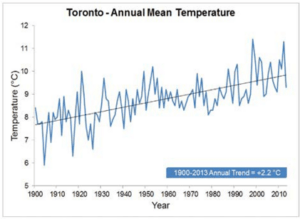
Fig. 1. Like most cities, Toronto’s rising temperature has been a harbinger of increasingly severe weather events, with increasing frequency and intensity. Source: Ontario Climate Change and Health Vulnerability and Adaptation Assessment Guidelines, Technical Document.
But this carbon challenge today is much more complicated than a successful moon shot, with much more at stake.
It must involve collaborative and strategic efforts by many professionals, including the preservation community. It requires significant “stepping up” by those whose particular skills and leadership can provide major contributions to the required complex matrix of de-carbonizing solutions. Our collaboration must be throughout multiple disciplines, involving many nations.
Heritage conservation professionals have developed advanced skills at questioning further, delving deeper into root causes and probing wider to gain clearer understandings of our subjects. We have skills and experience in determining value and how to protect it. We are truly cross-disciplinary and collaborative. We have honed these skills in our work with interventions to existing buildings.
This is the very resource, existing buildings, that is determined to be the single largest contributor to carbonization and Climate Chaos. *2 “Stepping up” therefore is not just our opportunity, it is our urgent responsibility, now and for the next 10 to 30 years, becoming an integral part of “The Next 50”.
In synopsis, this paper will:
- discuss the environmental imperative that contributes to a new paradigm in preservation;
- expand upon key issues and case studies of the APT 50 Buffalo Conference’s “Climate Chaos” Plenary;
- review a specific method for communities to commence their climate chaos actions;
- suggest that nature-based solutions, in harmony with technology-based ones, should be considered;
- include supporting case studies, or “conservation cautionary tales” for heritage-rich environments, using excerpts from recent reports, presented in two sidebars; and
- provide a call for urgent action by the conservation community, including related recommended specific actions for APT.
INTRODUCTION
The challenges we face today with Climate Chaos and its symptoms are profound: to overcome them, we will all have to reason with new frameworks and approaches; as Albert Einstein said, “We cannot solve our problems with the same thinking we used when we created them.”
In the face of these threats, the solutions for historic preservation will challenge the very foundation of its precepts, such as authenticity, context, and integrity. Fundamental questions arise i.e. how will we:
- apply the U.S. Secretary of the Interior’s Standards or Parks Canada’s Standards & Guidelines,
in context of new climate realities? - mitigate the impacts from severe weather events upon historic places and increased climate
variability that are already happening? - adapt our built heritage to new climate-disaster realities?
These areas of inquiry form a keystone heritage conservation quest for the next three decades.
With the onset of the “low carbon economy” and both its associated “race to net zero” and concerns for protecting our built heritage from climate-based threats, heritage conservation must now fully integrate with, and adapt to, decarbonization and climate protection planning.
We know that heritage conservation contributes to creating a sustainable built environment and resilient communities – but in a chaotically changing world, how can conservation persevere? Must we “reimagine” historic buildings and landscapes for the man-made “Climate Crisis Age”? (i.e. the Anthropocene, discussed below).
Prevention, Mitigation and Adaptation in the Climate Heritage Context
When it comes to understanding and fighting Climate Chaos resulting from escalating built environment carbon emissions, there are generally three areas of endeavour:
- Prevention
- Mitigation
- Adaptation
Prevention is about finding ways to reduce embodied and operating carbon emissions to zero, or even to net-positive, through the use of renewable energy sources and carbon sequestering. The conservation community has a large role to play in prevention, especially in adaptive reuse of older buildings and the development of a greater understanding of embodied carbon and its role. *3
The Association for Preservation Technology supports a Technical Committee for Sustainable Preservation (TC-SP) to, among other mandates, delve into that task. The TC-SP in turn has a Focus Group that is specifically concerned with carbon reduction: the APT representatives on a five-organization strategic collaborative, the Zero Net Carbon Collaboration for Existing and Historic Buildings (ZNCC). *4
The ZNCC is focused on research, solutions development, and networking of groups who are participating in the search for massive reductions of operating and embodied carbon toward a carbon-free world in 2050, as per the Paris Agreement targets. *5 This is a significant task. APT’s role will continue to include ensuring cultural values remain central to objectives and planning in this field.
Mitigation and Adaptation are the foci of this article. For our purposes, they may be described as:
Mitigation is the collective set of actions aimed toward neutralizing the effects of carbon-generated Climate Chaos on existing and historic places. It is the development of “strengthening” interventions that can be undertaken on these properties to reduce the impacts upon them from climate-generated destruction. This includes increasing severe weather events such as floods, excessive heat or cold, high winds, tornadoes, hurricanes, sea level rise and others.
Adaptation is the collective set of actions aimed toward modifying existing and historic properties in significant ways to reduce the need for more mitigation of the place. This could involve, for example, hoisting historic buildings up on stilts, moving them away from the coast, or taking other actions that may change one’s perception of the original building and its contextual relationship.
With both mitigation and adaptation there are hard questions to be answered with respect to maintaining the character-defining elements that give a place its heritage value. Finding new, creative solutions are required for both.
Over the last two centuries, we have increasingly used technology-based solutions to solve large challenges in overcoming natural processes or systems. Recently, we have even seen exponential change brought on by rapidly advancing technologies.
THE ANTHROPOCENE AND EXPONENTIAL CHANGE
The Anthropocene denotes the current geological age, viewed as the period during which human activity is the dominant influence on the earth and its environment. It is a currently proposed epoch, dating from the commencement of significant human impact on Earth’s geology and ecosystems, including, but not limited to, anthropogenic climate change.*6
This period continues through the present and will do so until a massive paradigm shift in human nature occurs. This shift would be characterized by the willingness to work within natural processes and systems, rather than by a continuation of behaviour that seeks to disregard, dominate or overcome nature. In other words, by embracing nature-based systems instead of only applying technology-based systems.
Solutions: Technology, Ecology, and Hybrids
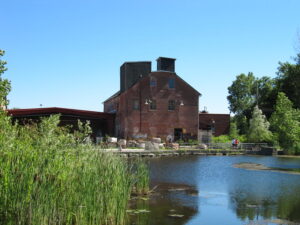
Fig. 2. The historic Don Valley Brickworks, Toronto. Adaptively reused as a community, education, event and commercial mixed-use center included in its adaptation plan, the design for rehabilitation & new uses in a way that allows the annual Don River flood to carry right over the property, respecting the laws of nature. Source: Loozrboy via flickr.
Some would have us rely on the imminent employment of rapidly advancing or “exponential” technologies *7 to overcome the climate chaos problem, allowing us to remain “business as usual”.
But if, for example, the technology solution is simply to cover all properties with photovoltaic panels and wind turbines, how does that impact historic properties? Is that a heritage conservation approach? Relying on technology alone to solve this problem is fraught with risk and may even prove disastrous.
Others would have us look to nature itself to generate solutions, that is, develop biological or nature-based solutions (for example, cultivating forms of algae or natural building materials that mega-store carbon) to reverse the natural destruction we have now ignited.
The ecologist Istvan Kenyeres has postulated, “We don’t have to save the environment ─ the environment is us.” That sentiment is compelling, but it does not equate to an imminent bio-solution to the carbon problem, nor even comfort us that humankind’s great disasters inflicted upon the planet can be fully overcome by nature itself.
Perhaps then, complex hybrids are the most likely preservation solution to achieving effective mitigation and adaptation, where we use both advancing technology and the lessons of nature to generate solutions, framed with a heritage conservation approach.
For example: deep green rehabilitation of a historic building – the use of advanced green technologies – will help us reduce carbon emissions but also harnessing the inherently and naturally sustainable features of the building itself (such as applying the natural principle of “hot air rises”) will put us over the finish line to zero net carbon.
The interconnectivities between culture, nature, art and science, first identified by Humboldt in the early nineteenth century, may be instructive here. In fact, this Prussian polymath, earth scientist, and cultural geographer was the first person to describe the phenomenon and cause of human-induced climate change, in 1800 and again in 1831, based on observations generated during his travels. *8
THE APT 50 CLIMATE CHAOS PLENARY
Climate Chaos & Historic Building Environments: The Intersection of Preservation & Resilience
Finding both technological and nature-based solutions against climate threats to heritage permeated the theme at the APT 50 Conference at Buffalo-Niagara’s PL-3 Plenary. Case studies were presented of efforts to date by the heritage community and others, toward mitigation of, and adaption for, severe weather events.
The panel of speakers and their presentations included:
- Mark Thompson Brandt, Session Lead: “Nexus of Preservation & Resilience: Re-Imagining Historic Places for Climate Chaos”;
- Robert Hotes: “Coastal Resilience: Strategies Addressing Sea Level Rise in Historic Districts”;
- Priya Jain: “Houston’s Buffalo Bayou: Present Challenges & Visions for the Future”; and
- Tom McGrath: “Resilience: A Preservation Response to Sea Level Rise & Climate Change”.
Resilience is the capacity to adapt to changing conditions and to maintain or regain functionality and vitality in the face of stress or disturbance. Historic buildings and districts can be both supportive of community resilience, and resilient themselves. This session examined threats to historic places as seen in Houston, Key West, Nantucket, and Annapolis, and explored mitigation and adaptation against these threats.
The question was posed: How can we simultaneously preserve our heritage and plan for climate resilience?
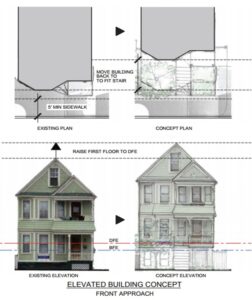
Fig. 3. Adapting historic buildings to rising waters: what are the preservation issues? Source: Lisa M. Craig, Principal, The Craig Group.
Mark Thompson Brandt introduced the plenary by inviting attendees to think broadly about resilience, including consideration of indigenous and traditional approaches.
For example, David Suzuki describes an indigenous “deep attachment to place” as the ingrained sense or drive to automatically and simultaneously care for both natural & cultural preservation of a given place. This underscores the essence of our realization that historic preservation is inextricably linked with environmental realities, ecological processes, and natural conservation. *9
The plenary speakers explored various aspects of responses to climate change-driven sea level rise and extreme storms, incorporating resilience measures into practice. We were provided insight into community preparation in anticipation of these events, actions in the aftermath of flooding and other examples from the perspective of heritage professionals. These are important viewpoints as we all collectively recognize and learn to grapple with new realities facing historic properties and districts.
Robert Hotes reported on Weather It Together Annapolis, a model for community engagement in preparation for the anticipated 44-inch rise in Chesapeake Bay within the next 100 years. Through a combination of subject matter expertise and community engagement, Annapolis has established a collective vision with goals, objectives, and community buy-in that will shape the city’s response in the years to come.
Hotes also shared perspectives of the emerging generation of design professionals as they confront the issues of rising water levels in the neighborhood surrounding historic Bridge Street, Newport, Rhode Island.
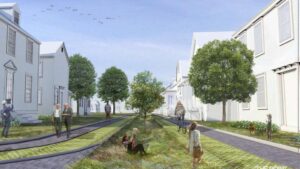
Fig. 4. Climate-smart Interventions – From Grey to Green to Blue Streets. Source: Liliane Wong, AIA, Professor and Chair, Department of Interior Architecture, Rhode Island School of Design; “Green Grey Blue” is the project of Angelica Carvahales, Eder Romero and Sneha Mathreja, RISD MA in Adaptive Reuse 2017.
Three student projects in a Rhode Island School of Design studio approached the problem in very different ways.
One presented a long-term strategy of turning the streets into linear parks with built-in water retention capacity, which would eventually become canals.
One, more theoretical project, provocatively relocated historic homes into a vertical exoskeleton.
The third took a playful, educational outreach approach as it created a virtual/augmented reality game, to allow players to see what the higher water levels would look like on Bridge Street, and collaboratively try to “save the street”.
Through all examples, Hotes made clear the necessity of working collaboratively across disciplines and within the community.
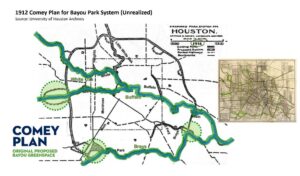
Fig. 5. The Comey Plan used existing low-lying green spaces as part of a plan for a linear park system along the bayous, providing a set of natural reservoirs for floods. The Plan was never realized. Source: University of Houston Archives; Priya Jain, AIA.
Priya Jain described the geographical and historical context of Houston, and how Hurricane Harvey became so devastating in 2017, despite the city’s presumed readiness, given its long history of flooding.
The city’s flat topography and series of slow-moving rivers (bayous) have led to past flood mitigation and prevention strategies, including the development of hardened reservoirs for water retention and control.
Intense citizen action spared the Buffalo Bayou the fate of the city’s other bayous, of straightening and concrete lining – an act that would have actually worsened the flooding effects over time.
Jain then discussed a series of case studies of adaptation designs in both buildings and landscapes along the Buffalo Bayou.
Some examples, such as buyouts of developed flood-prone parcels to create bayou greenways, demonstrated the potential of thoughtful design to transform necessary adaptation and mitigation strategies into amenities and catalysts for overall improvements in the surrounding community.
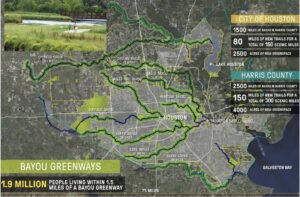
Fig. 6. The bayou network is part of a large ecosystem that is completely interconnected; root causes of problems will, and their solutions must, always be related to the wider system. Source: Harris County Flood Control District; Priya Jain, AIA.
Others, such as various building floodproofing measures, illustrate the sobering reality that if not built to match the severity of the flooding, even the best intended adaptation measures may fail.
Tom McGrath’s presentation translated the effects of sea level rise into the daily work of preservation professionals, through the identified need for incorporation of resilience strategies into building evaluations for heritage properties.
Through his observations and experiences working in Key West and Nantucket after severe storms, he presented clear lessons learned, examples of flooding resilience measures *10 and resources for technical guidance. *11
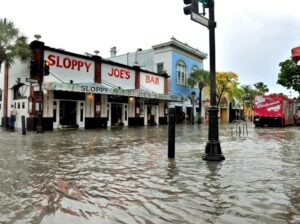
Fig. 7. Flooding on Duval Street in Key West, Fla. after roughly five inches of rainfall. Source: Rob O’Neal / The Key West Citizen.
McGrath noted that as always, the building’s past is to be understood for its history of building performance, but that we must also be aware of new and future threats and that resilience in the face of these threats should always be considered in assessments and plans for major interventions and capital improvements.
Cumulatively, the speakers raised important emerging concerns. Within the conservation community and the community at large, awareness and comprehension are needed first.
Far too often we need to live through the effects before they are fully understood.
But we must help develop that understanding in advance, through augmented reality, modelling, continuing education and other tools.
This awareness must turn to collective, active response, in preparation for and these threats.
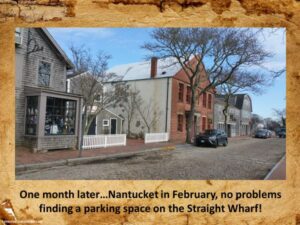
Fig. 8. Views down Nantucket’s Straight Wharf during flood (left) and one month later. Source: H. Thomas McGrath Jr. – FAPT-FAIA.
While many individual responses are necessary, it is through collective action that a cohesive and improved context will allow us to retain the integrity of our built environment.
This preparation will then also shape prioritization of decisions made in the aftermath of severe weather events, when it is necessary, yet most difficult.
Between the on-the-ground activities of communities building a body of knowledge and resilience, and the sometimes radical next level of reimagining the long-term adaptation of historic places, one thing becomes clear: much creativity, natural science, and technology need to be developed and applied before we get to a “comfort zone” of both protection of, and adaptation for, historic places in the face of climate threats.
There is much to be done to both mitigate threat and protect heritage value.
THE VULNERABILITY ASSESSMENT:
ACTING NOW TO PROTECT HISTORIC PLACES
The community actions against the impacts of Climate Chaos described at the APT 50 Plenary and in Case Studies herein show us what people are doing to mitigate for and adapt to climate change. Some of these efforts are projections for more extreme solutions, which will perhaps be the norm in the future. Practically speaking, how does a property owner or jurisdiction get started?
For immediate action, the first step is to understand and assess the situation on the ground. Climate change vulnerability and adaptation assessments (CCVA) are relatively new methods of documenting conditions and outlining actions with respect to severe weather events and their impact (including upon historic places).
Conducted by scientists, engineers and conservation professionals, CCVAs help to understand current impacts and projected future risks of climate variability, and to identify policies, actions, and programs to increase resilience to these risks. In general terms, CCVA assessments:
- Provide property owners, emergency management officials, stakeholders, and the public with information on the magnitude and pattern of current and future risks associated with severe weather events;
- Identify opportunities to prevent or reduce the severity of future risks; and
- Serve as a baseline analysis against which future changes in both risks and their associated policies and actions can be monitored.
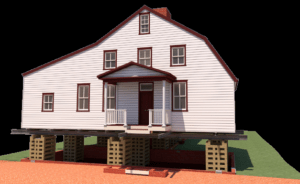
Fig. 9. Sands House, Annapolis, Maryland. ACTIONS: • Raise to above long term predicted flood levels. • Regrade with impervious surface to improve drainage away from structure. • Relocate electrical and HVAC equipment, interior and exterior, to above flood levels. • Install anti-backflow valves on sewer and drain lines. • Install properly sized flood vents within 1’ of floor level and exterior grade. Source: Keeping History Above Water & Speight Studio Architects Inc.
For those communities or property owners that have not already commenced preparing and taking action for adaptation of the built environment (particularly historic places) and related mitigation against the impacts of severe weather events, the following is a sample summary of the type of planning currently being undertaken in Ottawa, Canada.
This author’s firm, MTBA Associates Inc., was commissioned, along with prime consultants and earth science/landscape specialists, to undertake a Climate Change Vulnerability Assessment (CCVA) of an existing historic precinct. MTBA’s role was to provide advice on how the heritage qualities and assets of the historic place are uniquely vulnerable or resilient.
The approach is holistic and integrated with wider approaches to combatting the effects of Climate Chaos, for example in public safety or urban planning. Holistic and integrated approaches will be familiar to preservation professionals – this is another reason why the heritage conservation community can take a leadership role in helping make wise decisions with regard to mitigating the effects of climate change, while minimizing long-term, non-reversible impacts to buildings’ or districts’ heritage value.
This CCVA concentrates on the early initial stages, where a “Vulnerability Assessment” helps us better understand the historic place (a primary tenet of the Standards & Guidelines for the Conservation of Historic Places in Canada, the national reference). In this case, the understanding focuses upon the broad range of potential vulnerabilities that the historic place may have, to the various potential impacts of Climate Chaos.
To set an organizing order for the overall assessment, the team used the PIEVC Protocol (“pie-vee-cee”).
To help property owners develop resilience against impacts of increasingly severe weather events, Engineers Canada worked with the industry to create a framework that can identify risks, highlight areas to protect, and build resilience. Since its release, this Protocol has been applied dozens of times in Canada and several times in Central America.
The Protocol is not a software program, but a common-sense process with several steps:
Step 1: Define the boundaries to be evaluated. The boundary could be one specific building, or a district.
Step 2: Collect information. Locate sources from which to get solid data about the buildings and infrastructure – for example, recent data from a building’s roof, foundation, or ventilation system inspections.
Step 3: Determine the climate events that may impact the place. For example, prolonged heat can affect buildings in different ways – many consecutive days of 37-degree Celsius temperatures aren’t an issue for a building’s concrete, but could severely affect the building’s HVAC.
Step 4: Perform a risk analysis. This is often a huge matrix, with potentially hundreds of infrastructure components and a dozen or more potential weather-event elements. The PIEVC Protocol risk assessment analysis helps eliminate the unimportant interactions between these components and elements, cutting say 1,000 interactions down to, for example, 100. Establish an iterative process for managing and monitoring risks.
Step 5: Consider solutions. The Adaptation step: ask questions such as “How are we going to adapt? What are mitigative measures to minimize the impacts of those risks?” Look at how component failures are going to impact the building and the community. This is the “creative” part of the process. Integrate and collaborate widely with professionals from a variety of disciplines—including planners, operators, policy experts, architects, engineers, preservationists and other specialists. Examine the potential benefits and co-harms of adaptation and mitigation options implemented in other related sectors. Require rational logic sequences in development of potential solutions to resilience enhancement.
For example:
- How practical is it to disassemble and re-install 150-year old roof slates, using a new technologically advanced clip system?
- What are the relative advantages with elevating a building versus constructing a permanent flood restraining perimeter wall?

Fig. 10. Parliament Hill, Ottawa (left, rear) on its exposed escarpment, as seen from the Chaudière Bridge overlooking the Ottawa River. In 2019, the second one-in-one-hundred-year flood in two years caused the closure of the bridge and flooded the base of the escarpment. At right, the Chaudière Islands Historic District, part of a $1B rehabilitation and redevelopment just commencing, is particularly vulnerable. Source: MTBA Associates, Architects.
Comparative scenarios could involve a protracted level of analysis, modelling, sometimes even community input-gathering, to ascertain the optimum solution. In each case, the alternatives for historic places are filtered through the lens of: What are the physical and visual impacts upon heritage value? Otherwise, they go through the same filters as all infrastructure, including community, cost, and health impacts.
PIEVC Protocol can apply to a wide range of infrastructure, including heritage structures. Establishing a “climate risk, vulnerability and mitigation profile” focuses on actual key risks. Identifying these enables the development of useful solutions.
From a heritage conservation perspective, the emphasis is on identifying character-defining features of the historic place. Threats to these features become the “key risks”.
An advantage of historic elements’ risk assessment over newer infrastructure assessment is that there may be a larger body of intelligence from many years of meteorological data, to better understand patterns and resilience.
For example, a 1-in-100-year flood or hurricane that has previously threatened similar historic elements in question, within the vicinity. On the other hand, more challenging to heritage assessment is that the age of these elements may lower their tolerance to impact, potentially increasing the degree of unknowns and risk with severe weather events not experienced to date.
Defining Climate Hazards: The heritage assets of the subject Ottawa historic area range from low-level heritage resources to some of the highest value heritage resources in the country. It is a “heritage-rich” environment, with many designated heritage buildings, plus many other historic resources, which together make up a significant (though not yet designated) Cultural Heritage Landscape. Therefore, any impact, not just to individual properties, but to the entire area, is cause for heritage concern.
Generally speaking, due to their age (90 to 160 years), these heritage properties are more susceptible to weather-event impacts. This is despite an ongoing, and currently intensive, maintenance and rehabilitation program on a number of buildings in the area. Any weather event can occur during rehabilitation projects,
potentially worsening damaging effects. This is significant, as there will be more than another decade of rehabilitation to complete the current program.
Covering the full range of expected climate impact factors, the key hazards that will likely have more critical impact upon these heritage buildings, include such phenomena as:
- severe heat waves (impacts upon roofs, windows);
- extreme temperature fluctuations, especially when fluctuations cross the line of 0 degrees Celsius (impacts upon roofs, windows) and freeze-thaw cycles (impacts upon entire building envelopes);
- heavy or intense rainfall events (impacts upon doorways, drainage systems);
- snow accumulation (impacts upon roofs and, due to salting maintenance, to doorways and facades);
- extreme wind gusts (impacts upon entire building envelopes);
- ice storm/ice accretion (impacts upon entire building envelopes); and
- wind-driven rain (impacts upon entire building envelopes).
In this author’s opinion, vulnerability assessments will soon be common, as realities of the onset of Climate Chaos sink in, and the need for mitigation and adaptation become increasingly apparent. Like building codes before them, and like the increasing use of sustainability codes, these assessments may become required by law.
THE CLIMATE CHAOS CONTEXT FOR PRESERVATION:
RECOMMENDATIONS FOR APT’s ROLE
Over the next 10 to 50 years, the force of Climate Chaos issues will transform heritage conservation.
To maintain its leadership position, APT will need to plan now for its role, and take swift follow-up action, in at least four areas:
- Data Gathering & New Frameworks: APT must help its membership and the conservation community develop best practices to acquire the needed data to assist decision-making in:
- the formation of optimal solutions to zero-carbon building rehabilitation;
- improved and more widespread use of Life Cycle Assessment (LCA);
- new decarbonizing strategies (such as carbon calculators, design-assist tools, etc.); and
- new frameworks for climate adaptation and mitigation strategies.
- Evolving the Conservation Standards: APT must help lead the discussion about how Climate Chaos may encourage us into expediting what Gustavo Araoz called “The New Paradigm” *12 in historic preservation. This parallels the Historic Urban Landscape Approach (UNESCO HUL, 2010), where the standards for acceptability types or levels of intervention address the new realities of an intangible, fast-forward, rapidly-urbanizing, climate-impact world. Conversely, can APT help foster development of technologies to address these impacts, while staying in front of safeguarding or evolving accepted standards and guidelines for the conservation of historic places? This is now a “front burner” issue.
- Prevention: APT must help the conservation community take a leadership role in the “Race to Net Zero”, using our expertise in “managing change to existing buildings while retaining value”, in collaboration to address the required dramatic acceleration of context-sensitive rehabilitation of the massive stock of the world’s existing and heritage properties. Although it is a period only now being embraced by the preservation community, an obvious “large assignment” will be in the sustainable rehabilitation of heritage buildings from the Modern era, since buildings from this period are collectively the greatest greenhouse gas (GHG) “culprits”.*13
- Mitigation & Adaptation: APT must also help members lead best practices in the development of urgent actions, such as vulnerability assessments for historic places. As well, APT should be a leader in supporting research and development for creative mitigation of climate effects (reducing the physical and visual impact upon cultural value) and adaptation for Climate Chaos (adapting culturally valuable infrastructure to survive the devastating impact that climate events unleash), even while supporting GHG emissions reductions. This can be done through providing the optimal milieu for developing new technologies and development or re-discovery of traditional, nature-based solutions, as well as hybrid solutions. New policy development is also required. Given the collaboration imperative for climate impact response, should APT also lead best practices for education and outreach in this area?
CONCLUSION
Heritage conservation professionals have strong insights to contribute to the planning, testing and implementation for mitigation and adaptation that will be needed in the face of climate change disruption. Experience in community planning, rationale development and vetting, envisioning of creative alternatives, logic sequencing of potential outcomes and other skills developed by conservation architects in their design and change management practices for existing and historic properties, all provide valuable foundational expertise for Vulnerability Assessment and Adaptation Tools.
A large portion of the understanding, planning, and executing of Climate Chaos mitigation and adaptation for historic places will be the discourse on what is appropriate in this ‘new normal’. This author strongly cautions that we do not have the luxury of time to explore this for long ─ urgent action is required, both for our responsibility to help lead the effort, and for our responsibility to preserve our built cultural heritage. Developments in this field are already on “fast forward”.
The APT Technical Committee on Sustainable Preservation (TC-SP) is already evolving, as evidenced in the program at APT 51 in Miami, where many paper sessions and a full day Symposium were dedicated to Climate Chaos intersection issues. But there is much more to be done. The TC-SP and other Technical Committees in APT must work collaboratively and with others in the expanding climate action communities, to help develop nature-based and technology-based best practices for both mitigation and adaptation. We also need to help develop best practices regarding when and to what degree are more comprehensive changes to historic places acceptable under the “Climate Chaos New Normal”.
Endnotes:
*1. Notes on nomenclature: “Preservation” (U.S.) and “Conservation” (Canada & International) describe essentially the same process; both are used throughout this article. “Climate change” is a phrase that hardly describes the devastating impacts, or the urgent nature of relief required. The author prefers to use the more technically accurate phrase “Climate Chaos”. As it is a real phenomenon today, the author prefers to capitalize Climate Chaos, as a proper noun, to help communicate it as a clear and present danger. Similarly, the Intergovernmental Panel on Climate Change (IPCC) issued a late-2018 report, where leading scientists provide statistics that affirm humanity has about a decade to hold global temperature increases to 1.5 degrees Celsius.
*2. The IPCC has issued previous reports that indicate the various factors influencing carbon emissions. We know that existing buildings account for about 40% of the carbon emissions globally and related impacts upon our natural and cultural heritage. The deep green rehabilitation of existing building stock is arguably the single greatest area for change to achieve worldwide goals for reducing emissions and maintaining the temperature of the planet. Heritage buildings are an important subset of existing buildings.
*3. The recent improvements in the understanding of existing buildings’ embodied carbon underscores the necessity of “recycling” buildings rather than building new. Life Cycle Assessment (LCA) helps us better understand how our choices of materials and choices to reuse and rehabilitate over building new, can dramatically decrease our carbon footprint. Interestingly, “mainstream” architecture and green building/construction has just recently started to embrace the fact that to slay the carbon dragon, we need to be mostly focused on deep green rehabilitation of existing buildings, not new green buildings.
*4. The ZNCC is a strategic alliance committed to:
– Coordinating/monitoring technology development & integration for, and providing a unified resource for, the goal of responsibly bringing historic places to Zero Net Carbon (ZNC);
-Accelerating the ZNC of existing and historic buildings and places, accounting for both embodied carbon and operational carbon emissions, through developing leadership in best practices for the ZNC rehabilitation of most existing buildings, and in the responsible re-use of built resources in general. The Collaboration initially formed October 2017 with 5 founding partner organizations:
• Association for Preservation Technology International (APT)
• American Institute of Architects (AIA)
• Royal Architectural Institute of Canada (RAIC)
• International Council on Monuments and Sites (ICOMOS)
• Architecture 2030.
*5. At COP 21 in Paris, December 2015, Parties to the United Nations Framework Convention on Climate Change (UNFCCC) reached a landmark agreement to combat climate change. The Paris Agreement charts a new course in the global climate effort. Its central aim is to strengthen the global response to the threat of climate change by keeping a global temperature rise this century well below 1.5 degrees Celsius above pre-industrial levels. Additionally, the agreement aims to increase the ability of countries to deal with the impacts of climate change, making finance flows consistent with low GHG emissions.
*6. The Anthropocene Working Group (AWG) voted in 2016 to proceed towards a formal golden spike (GSSP) to define the Anthropocene epoch in the Geologic time scale and presented the recommendation to the International Geological Congress. In 2019, the AWG voted in favour of making a formal proposal to the ICS. – Wikipedia accessed September 19, 2019 https://en.wikipedia.org/wiki/Anthropocene
*7. Exponential Technologies are “Technologies that double in power or processing speed every year, while their cost halves.” ─-Michael Haupt website accessed September 19, 2019 https://michaelhaupt.com/exponential-technology-defined-374e2db882b0
*8. Friedrich Wilhelm Heinrich Alexander von Humboldt (1769 –1859): Between 1799 and 1804, Humboldt travelled extensively in the Americas, exploring and describing them for the first time from a modern scientific point of view. His description of the journey was published in an enormous multi-volume treatise, Kosmos, in which he sought to unify diverse branches of science, art and culture. This important work also motivated a holistic perception of the universe as one interacting entity. ─Wikipedia accessed September 19, 2019 https://en.wikipedia.org/wiki/Alexander_von_Humboldt
*9. “The future of environmentalism will be led by First Nations – because their fight is about – of course, about a way of life, but it comes from a deep attachment to place.”
─ Dr. David Suzuki, Environmental Scientist, interviewed for the exhibit,
“It’s All Happening So Fast: A Counter-History of the Modern Canadian Environment”, 2017 Canadian Centre for Architecture, Montréal.
*10. Flooding resilience measures discussed include: site measures (ensuring sidewalk integrity/porosity; regrading for drainage); systems (raise HVAC and electrical systems above flood levels; install anti-backflow valves on sewer and drain lines); dry and wet floodproofing (temporary flood barriers and flood vents); and raising the building elevation.
*11. Resources shared:
1. Protecting Utility Systems from Flood Damage Principles and Practices for the Design and Construction of Flood Resistant Building Utility Systems, FEMA P-348, Edition 2/ February 2017. https://www.fema.gov/media-library-data/1489005878535-dcc4b360f5c7eb7285acb2e206792312/FEMA_P-348_508.pdf
2. What is Flood Proofing? NY Southern Tier Regional Planning & Development Board. http://www.stcplanning.org/usr/Program_Areas/Flood_Mitigation/Floodproofing/FProof_01_Floodproofing.pdf
3. Flooding and Historic Buildings Technical Advice Note, English Heritage, 2nd edition 2007. https://www.ncptt.nps.gov/wp-content/uploads/Flooding-and-Historic-Buildings-Technical-Advice-Note-2004.pdf
4. Chronology and Historical Overview: Thomas Macy Warehouse, M. Chris Manning, Obed Macy Research Chair, NHA, updated August 2017.
*12. Gustavo Araoz (2011): “Preserving Heritage Places Under a New Paradigm”, Journal of Cultural Heritage Management and Sustainable Development. This paper called for expansion and evolution of the theories and practice of modern heritage conservation, based upon contemporary global trends. It suggested that this ‘new paradigm’ requires new tools to protect heritage.
*13. See also Mark Thompson Brandt (2017): “Buildings and stories: mindset, climate change and mid-century modern”, Journal of Architectural Conservation, DOI: 10.1080/13556207.2017.1327195
http://mtbarch.com/wp-content/uploads/2017/06/Buildings-and-stories-mindset-climate-change-and-mid-century-modern.pdf
Acknowledgements:
Thanks to Elizabeth Kolbert and Reed Karaim for permission to use excerpts from their reports; to Cory Rouillard for her co-rapporteur and panel discussion facilitator role and co-authorship of Section 3; to Barbara Campagna for steering the Plenary ship; to the APT Technical Committee on Sustainable Preservation (TC-SP) for the years of learning and inspiration (and many more to come); to Rachel and Carolyn for editorial assistance and of course to fellow presenters, Priya and Robert, at the APT 50 Plenary that ignited this investigation and urgent call to action. Finally, thanks to and in memory of Tom McGrath, who was sadly taken from us not long after his presentation at the Plenary.
About the Authors:
 Principal author Mark Thompson Brandt, OAA, RAIC, CAHP, APT-RP, LEED AP, AIA-IA is Senior Conservation Architect & Urbanist at MTBA Associates, Ottawa. He is a former APT Director and Co-Chair of the TC-SP Technical Committee on Sustainable Preservation and is a currently Co-Chair of the Zero Net Carbon Collaboration for Existing and Historic Buildings (ZNCC). He can be reached at mtb@mtbarch.com
Principal author Mark Thompson Brandt, OAA, RAIC, CAHP, APT-RP, LEED AP, AIA-IA is Senior Conservation Architect & Urbanist at MTBA Associates, Ottawa. He is a former APT Director and Co-Chair of the TC-SP Technical Committee on Sustainable Preservation and is a currently Co-Chair of the Zero Net Carbon Collaboration for Existing and Historic Buildings (ZNCC). He can be reached at mtb@mtbarch.com
Co-author Cory Rouillard, AIA, LEED AP is an Associate Partner at Jan Hird Pokorny Associates in New York. She is also a Co-Chair of the APT Technical Committee on Sustainable Preservation and Co-Chair of the OSCAR initiative. She can be reached at rouillard@jhpokorny.com

